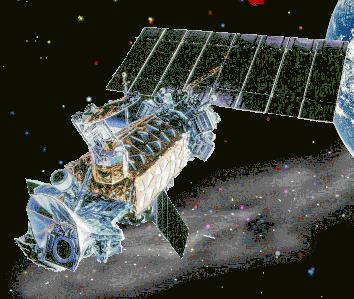 |
 |
 DMSP (Defence Meteorological Satellite Program), USA
DMSP (Defence Meteorological Satellite Program), USA

The US Air Force (USAF) Defence Meteorological Satellite Program (DMSP) operates a series of satellites which carry very sensitive light sensors known as the Operational Linescan System (OLS) that can detect light emission from the earth surface at night. The digital data from DMSP-OLS were archived at NOAA's National Geophysical Data Center (NGDC) since 1992. The USAF initially imposed a 72 hours embargo on the DMSP-OLS before they could be released by NOAA. Since 21 Dec 1999, the 72 hours hold has been relaxed to 3 hours. The DMSP-OLS has a ground swath of about 3000 km. It has two broad spectral bands, one covering the visible-near infrared region (0.5 - 0.9 µm) and the other is in the thermal infrared region around 10 µm. The OLS data are acquired in two spatial resolution modes: 'fine' and 'smoothed'. The full resolution fine data have a nominal spatial resolution of 0.56 km. On board averaging of five by five blocks of fine data produces "smoothed" data with a nominal spatial resolution of 2.7 km. Most of the data received by NOAA-NGDC is in the smoothed spatial resolution mode. The DMSP-OLS has a unique capability to observe faint sources of visible- near infrared emissions present at night on the Earth's surface, including cities, towns, villages, gas flares, heavily lit fishing boats and fires. By analysing a time series of DMSP-OLS images, it is possible to define a reference set of "stable" lights, which are present in the same location on a consistent basis. Fires are identified as lights detected on the land surface outside the reference set of stable lights.
 Back to Main Index Back to Main Index
|